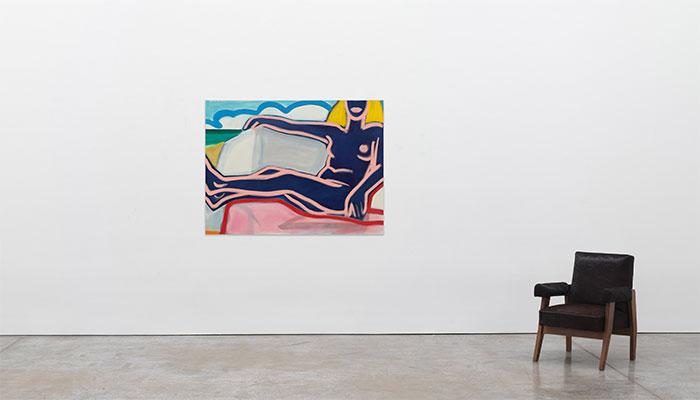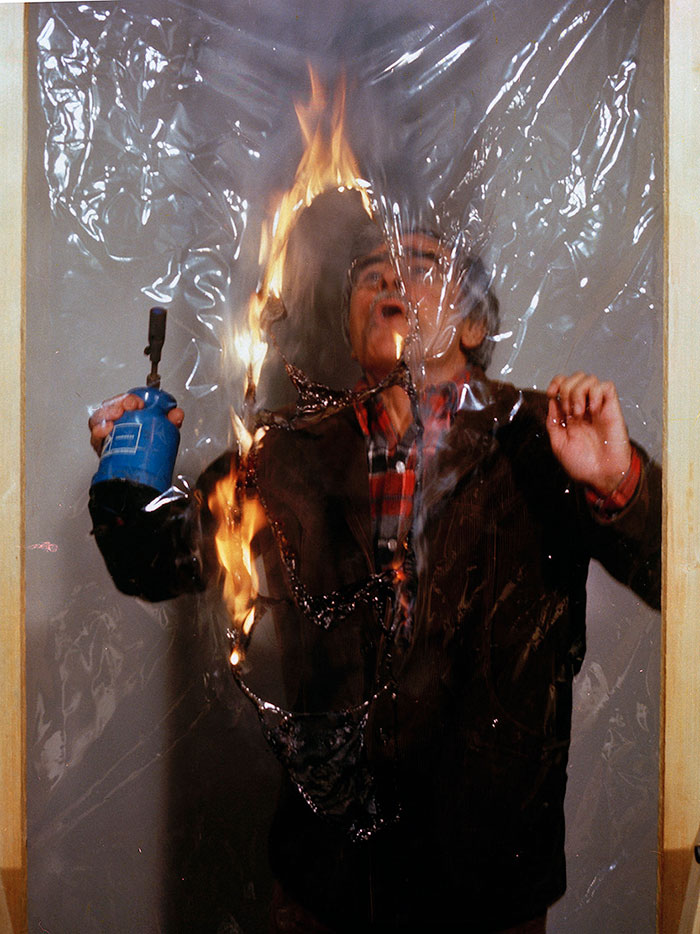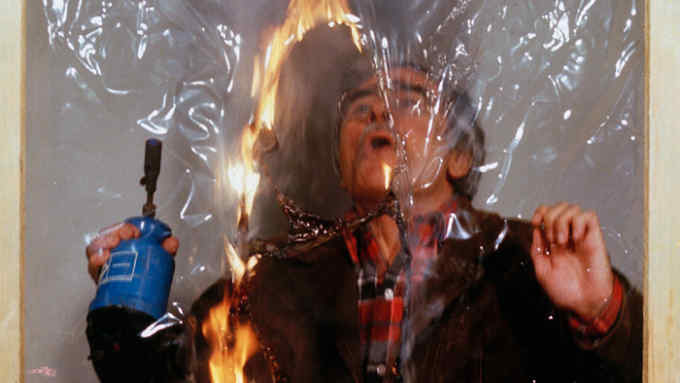We never, ever, close! Welcome to the 24-hour art gallery

Simply sign up to the Life & Arts myFT Digest -- delivered directly to your inbox.
Gagosian, the most mega of the mega-galleries, is going 24/7, at least virtually, during the next couple of weeks. From Monday until June 20, gagosianviewingroom.com, a manned microsite, will show and sell works by 10 artists, including Andy Warhol, Tom Wesselmann and Katharina Grosse, at any time of the day. There’s no attempt at virtual reality, but viewers will be able to zoom up close to works and a chair is positioned in each “room” to give a sense of scale. As well as its high price points (up to $1.2m), the biggest difference from your average online shop is that two staffers at a time, on six-hour shifts, will be on hand to respond to questions and make a high-end sale happen.
“It’s the equivalent of walking into a permanently open gallery anywhere in the world,” says founder and owner Larry Gagosian.
It’s no coincidence that the launch is happening around Art Basel, which opens to VIPs on Tuesday. The gallery is targeting an audience that increasingly buys during focused periods of activity, without necessarily being at its many events.
“The market is larger and more concentrated now, but at the same time there is more fatigue than ever before. People are electing to participate remotely,” says gallery director Sam Orlofsky. Works online will be largely separate from those the gallery is bringing to the fair, he says.
Prices will be posted loud and clear in the virtual viewing room, including for new works — a welcome decision from a gallery that is otherwise particularly private on this front. Depending on its success, the 24-hour shop will probably open again, around another period of peak market activity.
As ever, Gagosian gallery looks like it’s on the money. “People today are everywhere all the time with their handheld devices; that’s where transactions will occur,” Orlofsky says.
The family of Italian collectors Giuseppe and Giovanna Panza is gradually selling more than 100 pieces from its remaining holdings, mostly of American art, through Hauser & Wirth gallery. Giuseppe Panza, who died in 2010, was a property developer who began buying art in the 1950s and amassed a collection of 2,500 works by big-name postwar to contemporary artists including Mark Rothko, Donald Judd and Roy Lichtenstein.
While Giuseppe was alive, the Panzas sold and donated much of their collection to US museums, including 80 major Abstract Expressionist and Pop works to the Los Angeles Museum of Contemporary Art in 1983, and more than 350 Minimalist sculptures to New York’s Solomon R. Guggenheim Museum in 1991-92.
Their daughter, Giuseppina Panza, describes the arrangement with Hauser & Wirth as “an exclusive, long-term partnership”. The gallery will bring Brice Marden’s “Passage” (1973-74), bought by the Panzas in 1974, to its booth at Art Basel this week with an eight-figure price tag.
A new art fair, Sommet, is planned in the Swiss Alps during the next ski season, and will take place in the grand, 1880s Maloja Palace Hotel, St Moritz (February 8-11, 2019). Backed by Will Ramsay, who has founded events ranging from the Affordable Art Fair to ArtHK (now Art Basel Hong Kong), Sommet will have just 26 modern and contemporary art galleries including Almine Rech, Massimo de Carlo, Sadie Coles and Galerie Eva Presenhuber.
Sommet’s small size feels very on-trend now, as art fairs try to escape the identikit-booth look and become glamorous get-togethers at which the surrounding art happens to be for sale. Even “fair” has become something of a dirty word: Sommet is a “Winter Salon”. “Collectors don’t necessarily want to be among tens of thousands of visitors any more,” Ramsay says.
Artistic director is Giorgio Pace, founder of the niche Nomad art fair that went down well at its St Moritz launch this year. Sommet and Nomad will now coincide, with the latter focusing more on design.

One of the most striking stands at Art Basel this year looks to be Tornabuoni’s booth, dedicated to eight red, black and transparent burnt “Plastiche” works (1962-65) by Italian artist Alberto Burri (from €5m). A year-long commitment to the artist will include exhibitions in Tornabuoni’s London and Paris galleries and culminate in a solo show at the Fondazione Cini in Venice, during the 2019 Biennale.
Burri made his sought-after “Plastiche” works using industrial plastic sheeting, a new product in the 1960s. He burnt it with a blowtorch before shaping the holes by hand.
Works from Burri’s later, fibrous “Cellotex” series are also in Basel this week, through Luxembourg & Dayan gallery in the fair’s Unlimited hall.
Will Art Basel prove third time lucky for an important Jasper Johns painting that has failed to sell twice at auction? Bought in 1982 by Sotheby’s then soon-to-be owner A Alfred Taubman, “Disappearance I” (1960) was offered at his auction house in 2000, with a $4m-$6m estimate. It was later offered at the disappointing Taubman family auction in 2015, where it carried a $15m-$20m estimate.
The work contains a folded canvas, hidden by the artist’s trademark encaustic (a mixture of paint pigment with wax). Now New York dealer Emmanuel Di Donna is bringing it to Basel (price: $18.5m). “It’s not an auction picture. It’s a complex painting about ideas and needs context, time and discussion,” he says. Its recent inclusion in the Johns retrospective at the Royal Academy in London and The Broad, Los Angeles, should help too.
Follow @FTLifeArts on Twitter to find out about our latest stories first. Subscribe to FT Life on YouTube for the latest FT Weekend videos

Comments